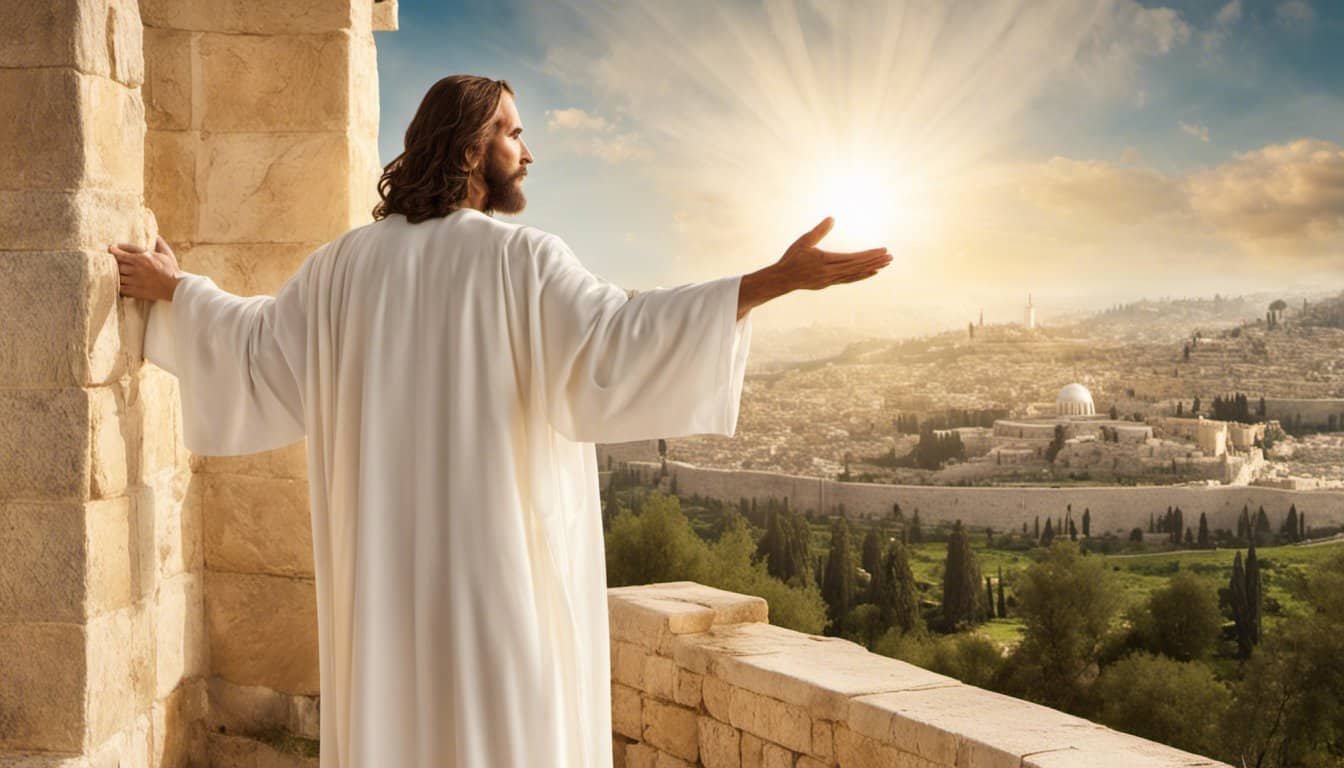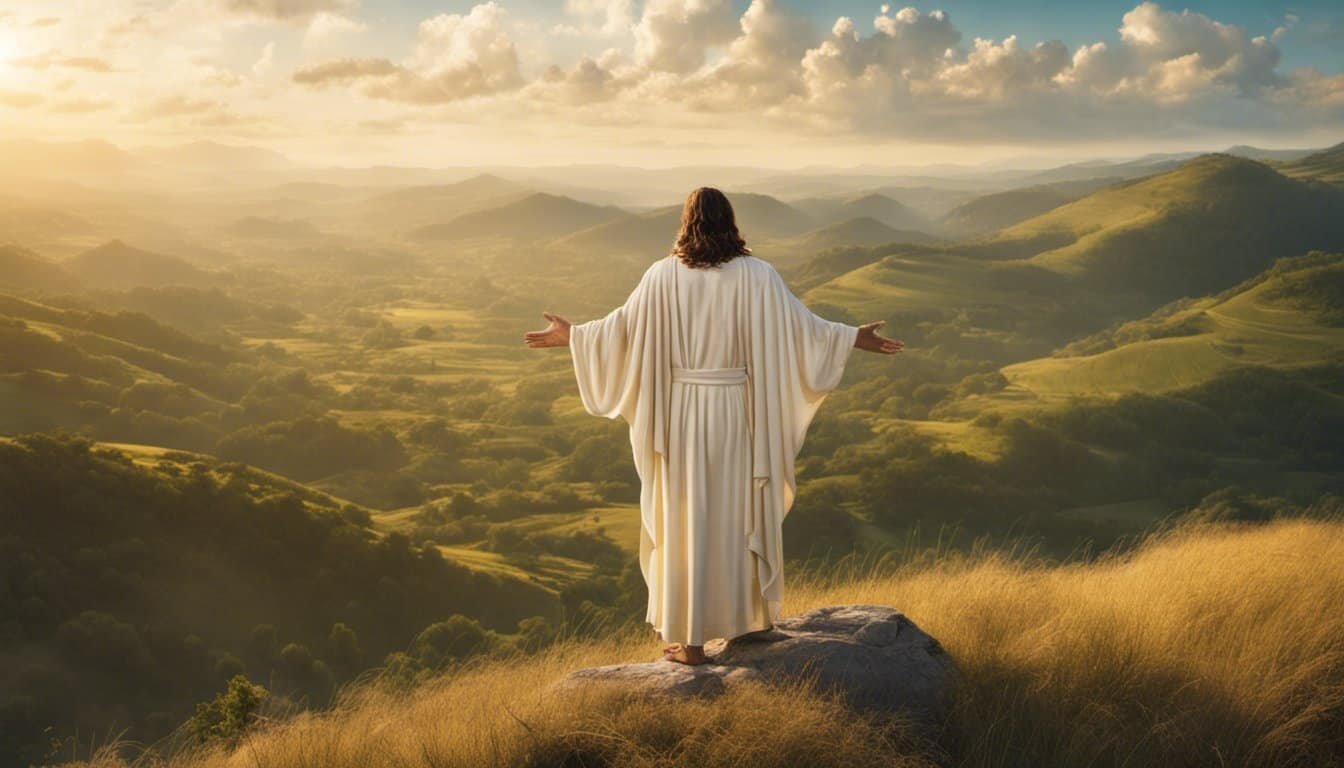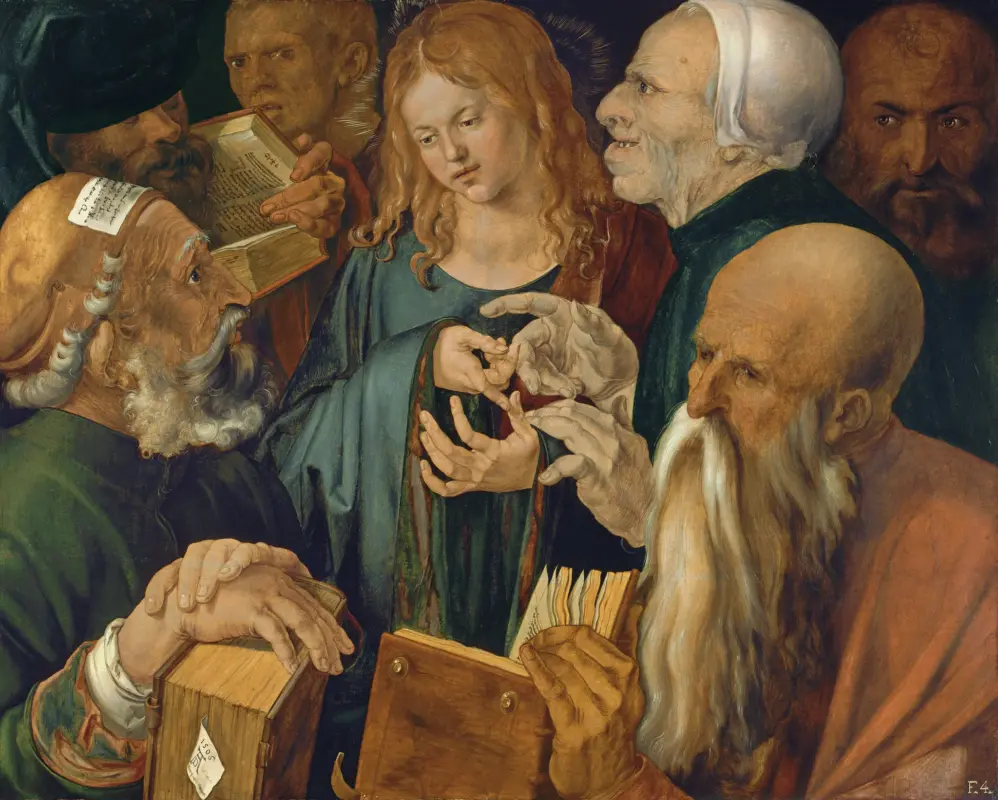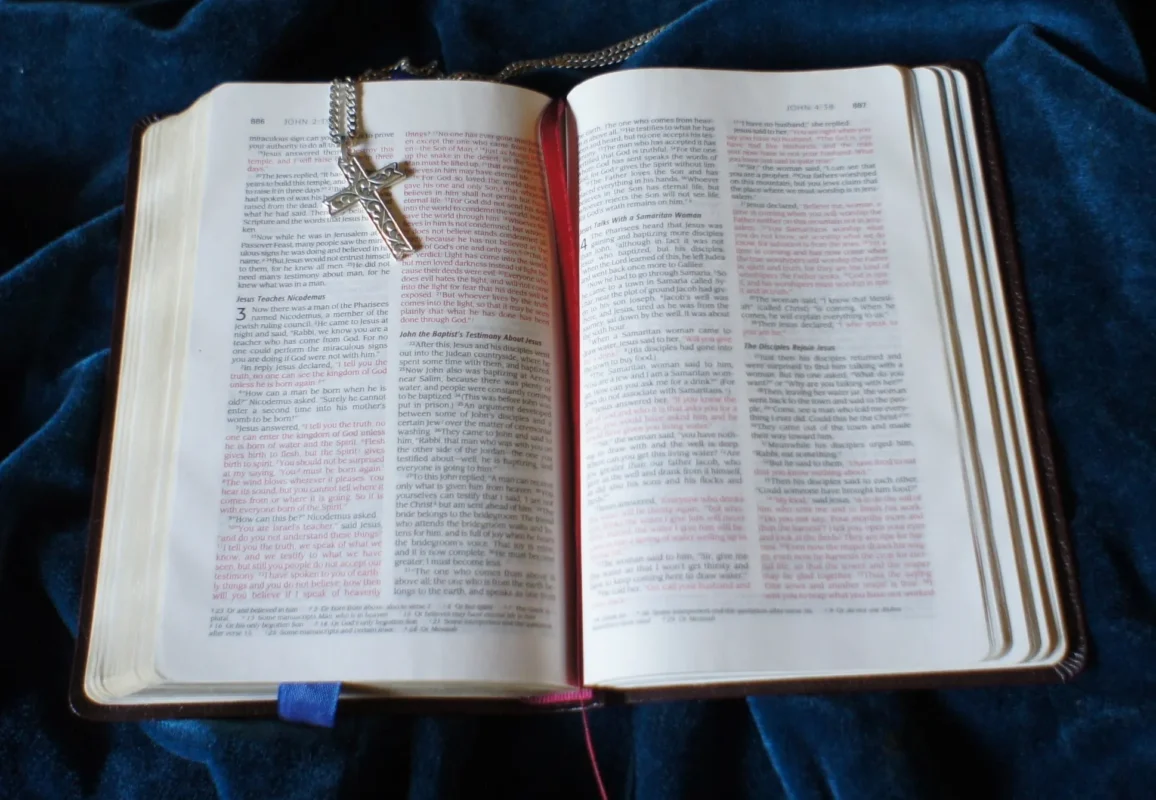The exploration of Christian denominations is a journey through history, tracing the evolution of a faith that began as a small sect within Judaism and grew to encompass a diverse array of beliefs and practices. My fascination with this topic comes from a desire to understand how the singular message of Jesus Christ gave rise to such variety in worship, governance, and community life. The roots of this sprawling tree reach deep into the soil of early Christian teachings, and over the centuries, various interpretations and cultural adaptations have shaped Christianity into the rich tapestry we see today.

The historical context and origins of Christianity are vital in understanding the development of its many branches. As the faith spread across different regions, each community interpreted the teachings of Christ through the lens of their own culture and experiences. This not only led to the formation of what we now call denominations but also influenced their governance structures and religious practices. Today, these denominations reflect the adaptability and expansive nature of Christianity, highlighting the religion’s profound impact on art, architecture, and societies around the globe. My dive into this subject reveals a myriad of ways in which the core beliefs of Christianity have been lived out through the ages.
Key Takeaways
- Exploring Christian denominations sheds light on the diverse interpretations of Christ’s teachings.
- Historical and cultural contexts have greatly shaped the development of different Christian practices.
- Christian denominations continue to influence global culture and individual lives.
Historical Context and Origins

The tapestry of Christian denominations is as complex as it is fascinating. Key elements that inform this rich history include the foundational teachings of Jesus Christ, the formulation of Christian doctrine, and the pivotal historical events and figures that have shaped the rise and evolution of the church’s many branches.
Early Church and Development
In the beginning, Christianity bore no denominations; there was simply the early church, an outgrowth of Judaism centered on the teachings of Jesus Christ. The early Christian community, united by a common belief in the resurrection of Christ, began to develop its own identity and practices. Central to this were gatherings in house churches and the formulation of doctrines like the Nicene Creed, which sought to unify believers under a common theological framework.
Great Schism and Branches
The Great Schism of 1054 was a landmark in denominational history; a division primarily driven by disputes over papal authority and theological nuances. It splintered Christianity into the Roman Catholic Church and the Eastern Orthodox Church—each with its own liturgical practices, governance structure, and, significantly, differing views on the authority of the Pope.
Protestant Reformation
Nearly five centuries later, the Protestant Reformation propelled by figures such as Martin Luther and John Calvin, ushered in a new era. Luther’s 95 Theses and the emergence of Lutheranism criticized church practices, prompting debates that ultimately led to diversification of doctrine and the birth of numerous Protestant denominations including Calvinism.
Spread of Christianity
Christianity didn’t just evolve; it spread—geographically and culturally. The faith took root in a variety of soils, influencing and being influenced by a myriad of local traditions and beliefs. This melding of the Christian message with diverse cultures helped create a colorful mosaic of practices and expressions of faith.
Historical Events Impacting Denominations
Significant historical events like the Councils of Chalcedon and Ephesus played roles in defining and defending key aspects of Christian orthodoxy. Political climates, societal changes, and philosophical trends also deeply influenced the direction and nature of Christian development.
Key Figures in Denominational History
Beyond Luther and Calvin, a host of other pivotal figures like Augustine, Thomas Aquinas, and more contemporarily, Karl Barth, have left indelible marks on the fabric of Christian belief. Their thoughts and actions have had a profound impact on the formulation of doctrine, ecclesiological structures, and the overall theological shape of the church as it is known today.
In this rich historical tapestry, we find a complex interweaving of beliefs, traditions, and events that illuminate the paths by which the single stream of early Christianity became a broad delta of diverse, yet interconnected, denominations.
Beliefs and Practices
In exploring the rich tapestry of Christian denominations, we see an array of beliefs and practices that define each group. These elements are influenced by interpretations of Scripture, the weight given to tradition and teachings, and the role of religious authorities.
Core Doctrines and Theology

I find that at the heart of Christian faith lie core doctrines, central to which is the belief in the Holy Trinity: the Father, the Son, and the Holy Spirit. Denominations differ in their teachings on the nature of salvation, the process of theosis, and interpretations of biblical authority. For instance, Roman Catholics hold the Pope’s teachings as authoritative, while Protestants look directly to the Bible.
- Authority: Varies from the papal authority in Catholicism to Scriptural authority in Protestantism.
- Holy Trinity: Universally acknowledged, though understood differently across denominations.
- Theosis: Primarily emphasized in Eastern Orthodoxy as a path to become more like God.
Sacraments and Rituals
Sacraments are vital expressions of faith and play a pivotal role in my and many Christians’ spiritual life. Baptism and the Eucharist (Communion) are universally recognized, although the frequency and mode of these practices differ. For example, my Baptist friends immerse believers completely during baptism, whereas my Catholic family sprinkles water on the forehead.
- Baptism: A rite of initiation that can be either infant baptism or believer’s baptism.
- Eucharist: Celebrated as Holy Communion, with variations in belief about the presence of Christ in the elements.
Worship and Liturgy
Worship styles across denominations range from the solemn and structured liturgies I’ve experienced in an Episcopalian service to the spontaneous and vibrant worship in a Pentecostal gathering. Many faith communities incorporate prayers, music, readings, and sermons that reflect their doctrinal beliefs and cultural heritage.
- Liturgy: Ranges from highly structured (Catholic Mass) to flexible and informal (non-denominational services).
- Worship Style: Can be traditional with hymns (Lutheran) or contemporary with praise bands (Evangelical).
Distinct Traditions
I observe that each denomination also brings unique traditions to the table, shaping Christian practice and identity. These include specific religious holidays, views on social justice, and stances on religious freedom. Some denominations have a strong practice of engaging in social justice efforts, while others focus more on personal piety and faith.
- Religious Freedom: A core value that informs denominational stances on governance and societal engagement.
- Social Justice: Varies from active involvement in societal issues to a more individualized spiritual approach.
Denominational Governance
In exploring how different Christian denominations govern themselves, I’ll dive into the nuances of their leadership structures, decision-making processes, and their relationships with state and government.
Authority and Leadership
« Profiles of Significant Christian Missionaries and Their Enduring Legacies
How to Engage with and Interpret Biblical Prophecy Today: Modern Insights »
Christian denominations vary widely in their structure of authority and leadership. For instance, the Roman Catholic Church is hierarchical, with the Pope at the apex and successive levels of bishops, priests, and deacons. In contrast, many Protestant denominations, such as Baptists and Methodists, operate with a more decentralized governance, emphasizing the local church autonomy. Presbyterian churches are distinctive in their use of representative leadership by elders, reflecting a balance between central and local authority.
Interpretation and Decision Making
Denominations handle the interpretation of Biblical tenets differently. Sola scriptura, a key Protestant principle, asserts the Bible’s supremacy in making doctrinal decisions, leaving traditions secondary. Denominations such as Lutherans and Anglicans value both scripture and church traditions for interpretation. Decision-making within denominations may involve councils or synods — gatherings of clergy and sometimes laity — to discuss and determine matters of doctrine and policy.
Church and State Relations
The relation between the church and the state has been a contentious aspect of denominational governance. Historically, entities like the Roman Catholic Church held significant secular power, while contemporary governance tends to favor the separation of church and state, upholding the principle of religious freedom. In the United States, for example, many denominations, recognizing the value of this separation, engage politically through moral persuasion rather than direct political power.
My hope is that through this brief exploration, you’ve gained a clearer picture of how various Christian denominations navigate governance within their communities.
Modern Denominations and Movements

In this section, I’ll explore the landscape of modern Christian denominations, focusing on their diversity and growth, as well as shared beliefs and newfound efforts for unity. The dynamic nature of culture and theology has shaped various movements, with each contributing to the rich tapestry of contemporary Christianity.
Major Christian Denominations
Modern Christianity is a tapestry woven with numerous denominations, each reflecting unique theological perspectives and cultural backgrounds. The Roman Catholic Church remains one of the largest denominations, with a significant global presence and a rich tradition that dates back millennia. On the other hand, Protestantism has diversified into various branches such as Lutheranism, known for its doctrinal emphasis on grace and faith; Anglicanism, which balances Protestant theology with Catholic tradition; and Baptist groups, which advocate for baptism of believers by immersion. Methodism with its focus on social justice and personal holiness, and Pentecostalism, which emphasizes the active presence of the Holy Spirit and spiritual gifts, also continue to grow and enrich the Christian faith.
Evolving Beliefs and Practices
My examination of Christianity wouldn’t be complete without acknowledging how beliefs and practices have evolved over time. There’s a shift towards contextual theology — that is, understanding Christian teaching through the lens of contemporary culture and challenges. For instance, many denominations now actively engage with modern issues such as climate change and social inequality. This is visible in denominations like the Methodist Church, where a strong emphasis is placed on practical divinity and active faith in social issues.
Ecumenism and Unity Efforts
Ecumenism represents the effort to foster unity among Christian denominations. This movement has gained traction as various churches recognize shared beliefs over divergent practices. Unity initiatives often manifest through interfaith dialogue and cooperative projects, bridging divides between Catholicism, Protestantism, and the Eastern Orthodox Church. Such dialogues have the potential to create stronger communities by focusing on commonalities, like the centrality of Christ’s teachings in daily life.
Contemporary Movements

Finally, let’s touch on some key contemporary movements that have shaped the modern Christian landscape. The Charismatic Movement, with its stress on the Holy Spirit’s power and the practice of spiritual gifts like speaking in tongues and healing, has crossed denominational lines and invigorated traditional worship styles. Plus, the rise of independent, non-denominational churches indicates a movement towards flexibility in worship and a desire for a personal, less institutionalized religious experience. These developments reflect the ongoing growth and diversification of Christian faith in today’s world.
Throughout these subsections, I’ve illustrated that whether through emerging denominations, evolving practices, or efforts for unity, modern Christianity is far from monolithic. It continues to adapt and flourish in diverse ways.
Cultural Influence and Adaptation
In this section, we’ll explore how Christianity has intersected with various aspects of culture, from traditions to the arts. I’ll also discuss how the faith adapted to societal changes, contributing to and being shaped by the world.
Christianity and Cultural Traditions
Cultural traditions and Christianity have intertwined significantly. I’ve found that, in many cultures, local customs and religious practices are not easily separated. In certain African contexts, the meshing of Christianity with indigenous traditions has led to a unique expression of faith that respects and incorporates local customs.
Artistic and Musical Contributions

Christianity has made an indelible mark on art and music. The religion’s narratives and iconography have inspired some of the world’s most renowned artworks and compositions. From the awe-inspiring frescoes in the Sistine Chapel to the complex harmonies of Handel’s “Messiah,” these creations have often been acts of devotion, and at times, a means of sharing religious stories and values.
Moral Teachings and Social Ethics
The moral teachings of Christianity, particularly the emphasis on love and social justice, have had profound impact on societies. The faith has often driven advocates for change to fight for causes such as the abolition of slavery and the Civil Rights movement, offering both a moral framework and a source of hope. My reading has shown me that the concept of religious freedom is also nested deeply within these teachings.
Adapting to Societal Changes
Christianity has repeatedly adapted to changes in society. Throughout history, the faith has faced scientific advancements, political upheavals, and shifts in societal values. Its ability to interpret and recontextualize teachings in light of new knowledge and cultural shifts has often been remarkable. Yet, as noted in some research, there is also a need to recognize the complex relationship between a secular state and a cultural religion.
Personal Devotions and Community Life
In exploring the roots of Christian denominations, one finds that personal devotions and community life are intertwined aspects that reflect the spirit of unity and belonging. I’ll share how these practices shape not only individual faith journeys but also the collective worship experience.
Prayer and Personal Practice

I find prayer to be a profound personal practice that fosters a direct connection with the divine. Whether it’s a quiet morning with the Scriptures or a reflective evening meditation, these moments are crucial for my spiritual growth. In my experiences with various denominations, I’ve observed that while the form of prayer may vary—some using free-form worship and others sticking to structured liturgies—the core intent remains constant: to seek communion with God.
- Daily Prayer Routines:
Community Worship and Celebrations
When I join my community for worship, it’s a celebration of faith that reinforces our sense of belonging. Each denomination has its own worship style, from the simplicity of a Quaker meeting to the rich pageantry of a Catholic Mass, but all aim to unite the congregation in praise and prayer. Special celebrations like Easter and Christmas become focal points where the entire church comes together. It’s during communal times like these that the unity of our denomination shines through.
- Types of Community Worship:
- Traditional Liturgy
- Contemporary Services
Role of the Family and Community
My family upbringing plays a pivotal role in how I perceive and live out my faith. It is within the family unit that many of us first learn about prayer, worship, and the values of our denomination. Moving beyond the immediate family, the broader church community acts as an extended family, where everyone—regardless of age or background—can find support and mentorship.
- Family and Community Functions:
- Teaching and nurturing faith
- Providing a support network
Comparative Theologies
In this exploration of Christian denominations, I aim to shed light on how different traditions understand core theological concepts. I’ll examine their unique interpretations of justification and salvation, unpack their views on the Trinity and theosis, and outline their approaches to priesthood and ecclesiastical structures.
Justification and Salvation

One of the key differences among Christian denominations revolves around the perception of justification and salvation. Traditionally, Roman Catholicism emphasizes justification through both faith and works, viewing the sacraments as effective means to receive grace. In comparison, many Protestant denominations, like Lutherans and Methodists, stress justification by faith alone (Learn Religions), asserting that faith in Christ is sufficient for salvation, with good works being a fruit of that faith rather than its basis.
Trinitarian Doctrine and Theosis
Delving into the Trinitarian doctrine, most Christian branches concur on the concept of one God in three persons: Father, Son, and Holy Spirit. However, the Eastern Orthodox Church uniquely emphasizes theosis as part of salvation – a process of becoming more like God in nature through cooperation with His grace. I find this contrast fascinating when reviewed alongside the typical Western Christian focus on legal categories of sin and redemption.
Priesthood and Religious Hierarchy
The structure of church leadership varies significantly between denominations. On one hand, the traditional Roman Catholic and Orthodox churches maintain a hierarchical priesthood, including the episcopate, which is seen as a direct extension from the apostles (Christianity FAQ). Conversely, denominations like the Baptists uphold the “priesthood of all believers”, asserting that each Christian has direct access to God without the need for an intercessory clergy. These differing views on the priesthood and religious hierarchy highlight the diversity in ecclesiological thinking across Christianity.
Art, Architecture, and Symbols
Art and architecture in Christianity are not just aesthetic expressions; they carry deep symbolic meanings and reflect the theological and doctrinal nuances across various denominations. These elements often serve as a visual narrative of faith, portraying biblical tales and theological concepts.
Church Buildings and Architecture

I have always been fascinated by the architectural designs of church buildings which vary significantly across Christian denominations. Gothic cathedrals, for instance, with their towering spires, were designed to point worshipers’ thoughts heavenward. The design of church buildings often integrates liturgical functions and symbolic meanings. The altar, for example, is central and signifies the Last Supper, while the baptismal font, typically located at the entrance, symbolizes the entry into the faith through the sacrament of baptism.
Christian Iconography
When I examine Christian iconography, the Virgin Mary is one of the most pervasive subjects, represented in various forms such as the Madonna and Child. These icons are not merely decorative; they serve devotional purposes and act as didactic tools. The symbolism in Christian art provides insights into the faith and is steeped in history. In many traditions, icons are venerated and believed to offer a connection to the divine. Sacred art, such as paintings and stained glass, often narrates biblical stories or the lives of saints, aiding believers in contemplating the mysteries of Christian teachings.
Challenges and Future Outlook
Diving into the diverse world of Christian denominations reveals both a rich tapestry of traditions and serious issues to confront. I’ll explore the challenges denominations face internally, the trends influencing their growth and decline, and the prospects for unity that may emerge in the evolving religious landscape.
Challenges Within Denominations
Denominational divisions often stem from varying interpretations of doctrine and practice. I’m aware that maintaining a balance between upholding tradition and adapting to modern times can be tough. In some cases, these internal struggles lead to further fragmentation, while in others, they spur efforts at finding common ground.
Growth and Decline Trends

Growth and decline within Christian denominations can often reflect broader cultural shifts. For instance, certain evangelical and Pentecostal movements have seen considerable growth, particularly in the Global South. Conversely, traditional mainline denominations in the West have generally faced decline, as secularism gains ground and attendance wanes.
The Future of Christian Unity
Looking ahead, the quest for Christian unity seems poised to encounter both opportunities and hurdles. While denominationalism presents challenges to unity, there are movements striving for collaboration. Ecumenical efforts, such as dialogues among different denominations, show promise for fostering a more united witness in a fragmented world.
Conclusion
As I’ve delved into the rich tapestry of Christian denominations, I’ve discovered a fascinating blend of belief systems, traditions, and cultural influences that have shaped Christianity into the multifaceted faith it is today. My exploration highlights that denominations like Roman Catholicism stem from early Church teachings and the overarching governance of the Pope. In contrast, the principle of congregational autonomy champions the independence of local churches within denominations such as Baptists.
- The roots of these diverse denominations sometimes lay in a distinct theological belief or a disagreement on church practices.
- External factors such as politics, culture, and geography have historically played roles in shaping denominational lines and ecclesiastical structures.
It’s clear that the landscape of Christian denominations is both complex and dynamic. Unraveling this intricate history has been an eye-opening experience, revealing to me not only the diversity within Christianity but also the shared core of faith that unites these various branches.

As I reflect on my journey of understanding, it’s my hope that this knowledge fosters deeper tolerance and dialogue among Christians of different denominations. Embracing our shared heritage and respecting our differences can lead us to a more harmonious coexistence and a richer experience of the Christian faith.



















